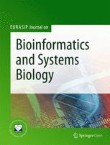A systems biology approach to analyse leaf carbohydrate metabolism in Arabidopsis thaliana
Plant carbohydrate metabolism comprises numerous metabolite interconversions, some of which form cycles of metabolite degradation and re-synthesis and are thus referred to as futile cycles. In this study, we p...
